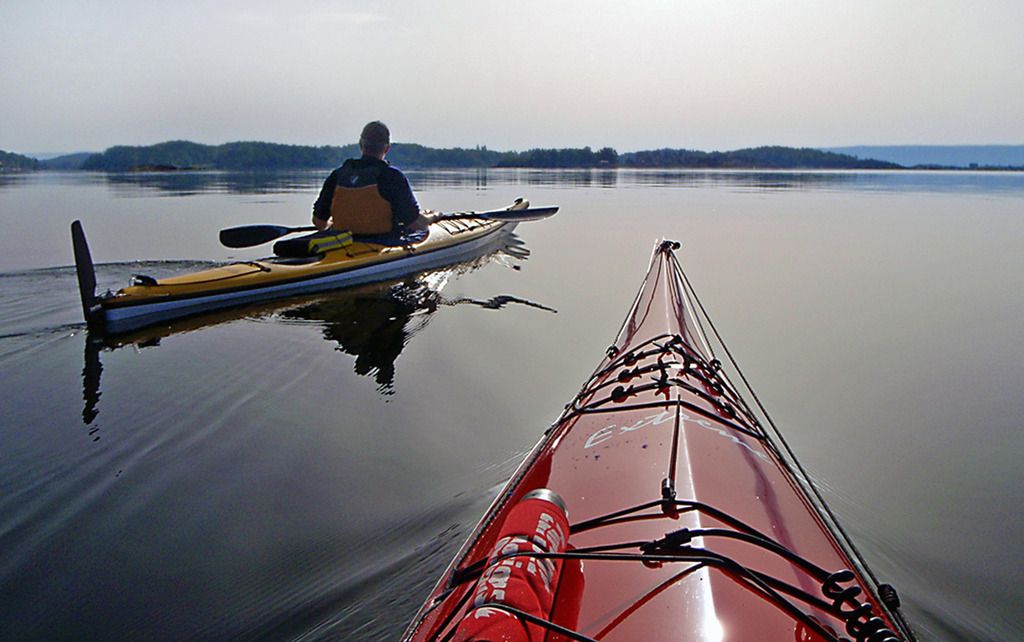
Editor's note: Looking at the photo above can you tell wether it is a wetsuit or drysuit day? Image by Current Designs
ANNAPOLIS, Md, November 14, 2016 – The boat may be put away for the season, but the occasional warm fall day still brings plenty of paddlers out on the water. Knowing when to wear the thermal protection offered by a dry- or wetsuit is key. However, a long-assumed guideline meant to help paddlers make the right decision, sometimes known as the “120-degree rule,” may instead put paddlers in danger.
The 120-degree rule is a formula that adds together the air and water temperatures to determine when thermal protection is required. It assumes that if the total is above 120 F, that no dry- or wetsuit is needed.
“Using this simple formula,” says BoatUS Foundation Assistant Director of Boating Safety Ted Sensenbrenner, “a paddler could mistakenly believe that if air temperature is the low 70s and water temperature is hovering around the low 50s, that thermal protection is not necessary. That could not be farther from the truth.”
Sensenbrenner says that warm fall or spring days give paddlers a false sense of security. “Water temperatures have plunged, but the warm sun on your face hides the reality that accidentally going overboard at this time of year could quickly lead to trouble.”
According to research, sudden cold-water immersion can kill in several ways: involuntary gasp reflex and hyperventilation, cold incapacitation, and immersion hypothermia. Not wearing a life jacket compounds the drowning risk.
A word to the wise? “Always wear a life jacket when in an open boat or on deck, and consider the water temperature when dressing for your next boating adventure,” says Sensenbrenner. For more on cold-water boating including what to wear, go to BoatUS.org/cold-water-boating.












